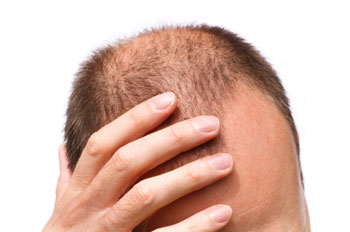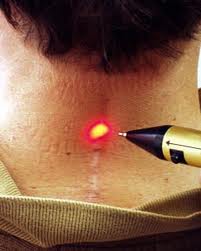For the first time, a team of scientists reports successfully growing human hairs from dermal papilla cells taken from the inside of donor hair follicles.
The team, from Columbia University Medical Center in the US and Durham University in the UK, says their technique generates new human hair growth, rather than simply redistributing hair follicles from one part of the scalp to another.
In a study they report online this week in the Proceedings of the National Academy of Sciences (PNAS), they describe how they tested their new approach on mice - by growing hairs on human skin grafted onto the animals.
Current hair transplant treatments relocate hair follicles from one part of the head to another, usually from the back to the front. This redistributes rather than increases hair follicles and is a lengthy process that can take all day in the clinic and leaves a large scar.
The new approach would actually increase the number of hair cells able to produce hair. It would take fewer hair cells (leaving a much smaller scar), grow them in a lab culture, then transplant the multiplied cells back into the bald or thinning parts of the patient's scalp.
If it leads to clinical success, the technique could benefit not only men in early stages of baldness, but also women with hair loss, who are mostly unable to use current transplant treatments because of insufficient donor hair.
Co-lead author Angela M. Christiano, the Richard and Mildred Rhodebeck Professor of Dermatology and professor of genetics & development at Columbia, explains:
"This method offers the possibility of inducing large numbers of hair follicles or rejuvenating existing hair follicles, starting with cells grown from just a few hundred donor hairs. It could make hair transplantation available to individuals with a limited number of follicles, including those with female-pattern hair loss, scarring alopecia, and hair loss due to burns."
New hair growth in mice
The idea of cloning hair follicles has been around for decades. Scientists already know that dermal papilla cells, that are found inside the hair follicles, can give rise to new follicles.
But attempts to make this happen tend to hit brick walls, as co-lead author Colin Jahoda, professor of stem cell sciences at Durham and co-director of North East England Stem Cell Institute, explains:
"However, once the dermal papilla cells are put into conventional, two-dimensional tissue culture, they revert to basic skin cells and lose their ability to produce hair follicles. So we were faced with a catch-22: how to expand a sufficiently large number of cells for hair regeneration while retaining their inductive properties."
They found their way out of the catch-22 when they observed how hair grows on mice and other rodents. Prof. Jahoda, one of the early founders of stem cell sciences, has been working on methods of harvesting, expanding and successfully transplanting rodent skin cells back into their skin for years.
From observing this process over the years, the researchers developed a hunch that one reason rodent hair transplants easily is because once they are in culture, rodent skin papillae tend to spontaneously aggregate, unlike human papillae.
They reasoned that the clumps of rodent skin papillae were somehow creating their own environment, allowing them to interact and send signals in a way that reprogrammed the recipient skin to grow new follicles.
So they tested their idea by harvesting dermal papillae from seven human donors and cloned them in tissue culture - without adding any additional growth factors.
After a few days, they transplanted the papillae clones, which had formed into three-dimensional "spheroids" in the tissue culture, between the dermis and epidermis of human skin that had been grafted onto the backs of mice.
Five of the seven transplants generated new hair growth that lasted at least 6 weeks. And when they tested the DNA of the new hair follicles that had been generated in each transplant, the team found it was human and a genetic match to that of the donors.
While the technique appears to have the potential to transform the treatment of hair loss, there is a lot of work still to be done before it can be tested in humans, as Prof. Jahoda explains:
"We need to establish the origins of the critical intrinsic properties of the newly induced hairs, such as their hair cycle kinetics, color, angle, positioning, and texture. We also need to establish the role of the host epidermal cells that the dermal papilla cells interact with, to make the new structures."
However, the team is optimistic that clinical trials will be able to start in the near future.
Written by Catharine Paddock PhD
Ref:
Microenvironmental reprogramming by three-dimensional culture enables dermal papilla cells to induce de novo human hair-follicle growth; Claire A. Higgins, James C. Chen, Jane E. Cerise, Colin A. B. Jahoda, and Angela M. Christiano; PNAS published online 21 October 2013; DOI: 10.1073/pnas.1309970110




